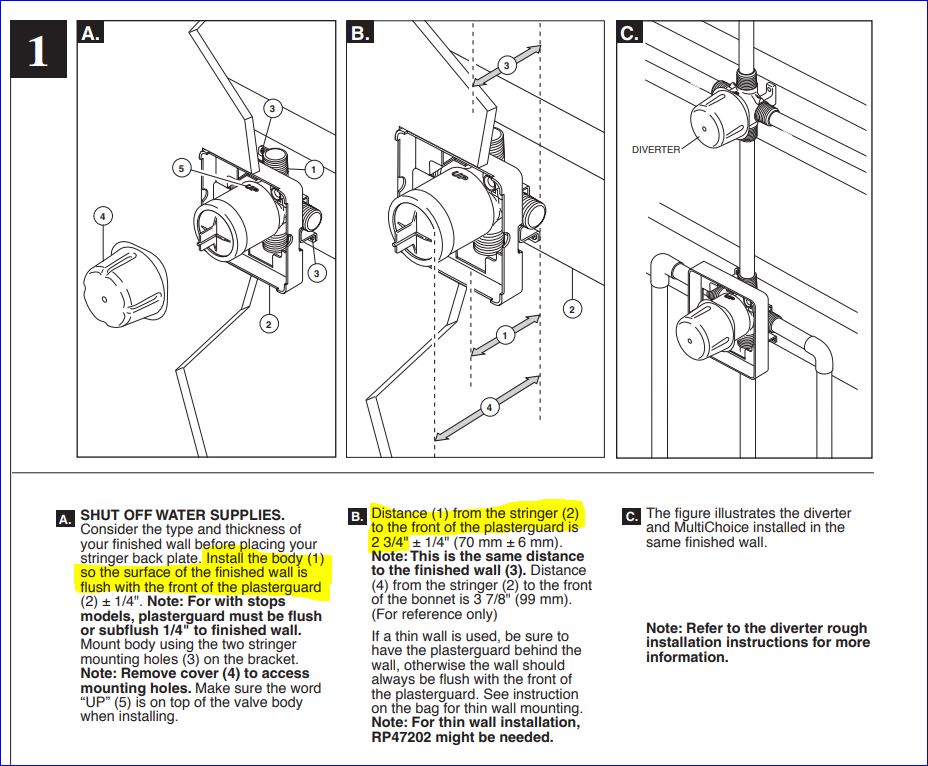I was wondering if there is an industry standard in terms of what depth to set shower mixer valve blocking at? In your traditional house the wall is only a 2x4 depth, meaning a block of 2x4 would only leave 2" of depth if the back side of the shower mixer wall was drywalled. I have read that the standard plastic ground is supposed to be flush with the finished surface of the shower wall, in my case, tile.
According to these instructions, that makes me have to bump my 2x4 blocking OUT of the 2x4 stud cavity. I have this luxury because that is not a finished wall surface. However, it seems odd - even backwards, and it seems like I would need the block to stick inward instead because I have a thicker wall than a normal precast shower enclosure. I'm going to have 1/2" tile board, the thinset, and 1/4" tile. These numbers don't add up and I am thinking I made a mistake. It's a Delta shower kit, meaning mixer valve, shower head, and trim rings all in one and not something universal.

